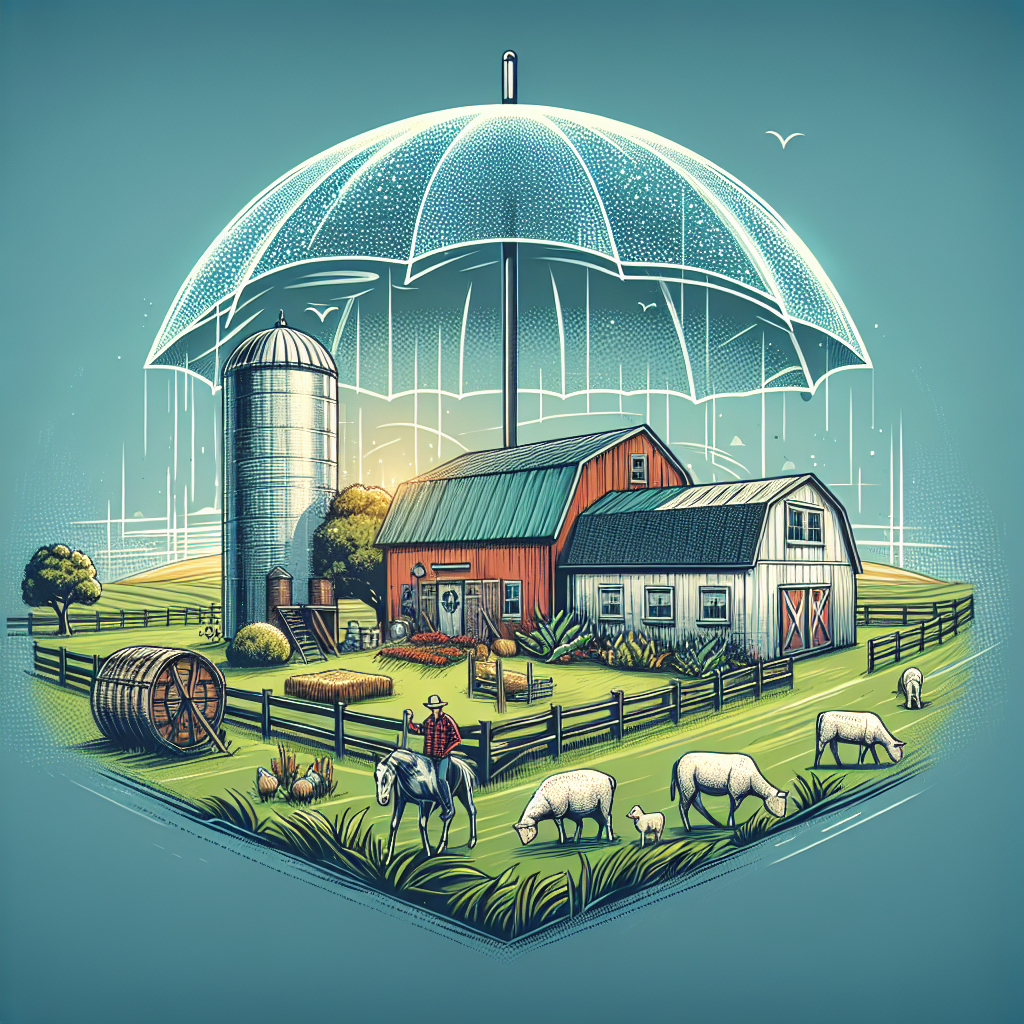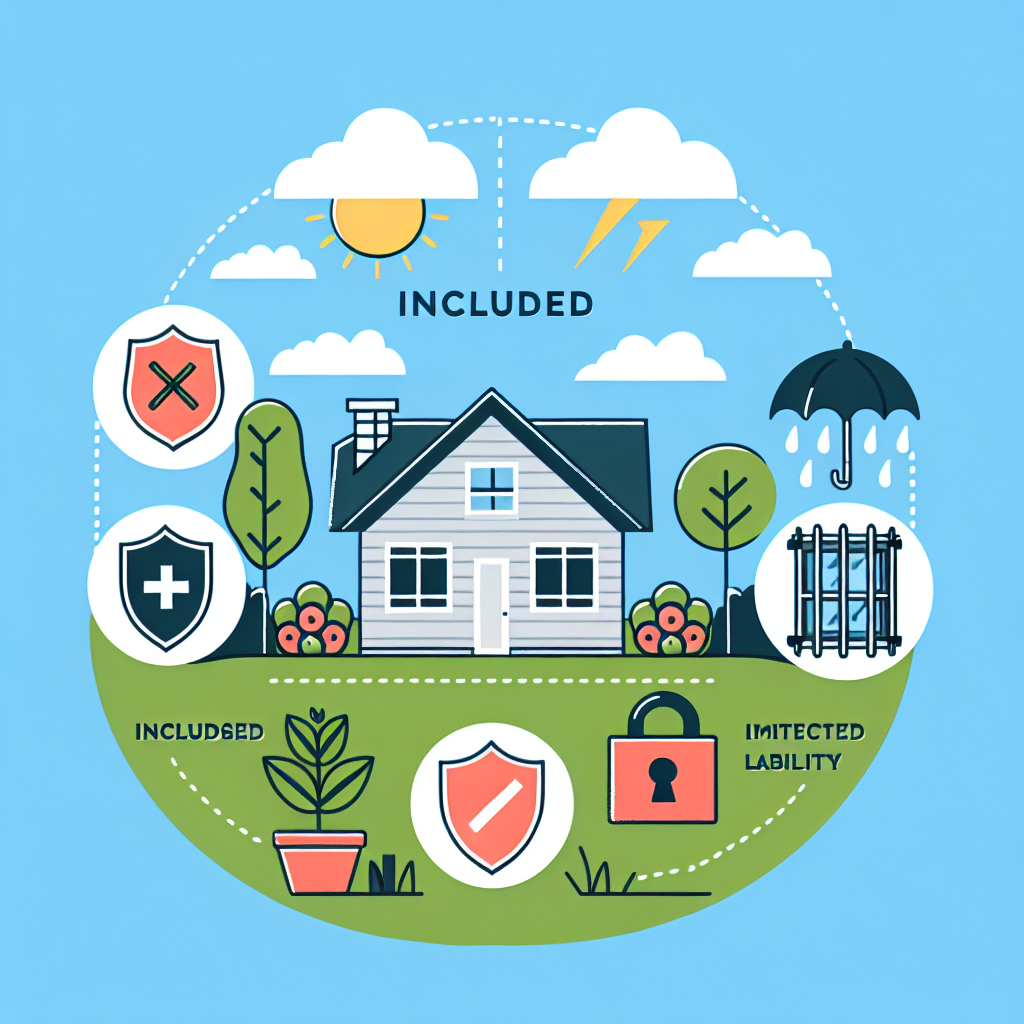Filed under Home Insurance on
Farmers Home Insurance Coverage Explained

Your house is more than walls and a roof—it is a financial anchor and a place where life happens. The right homeowners insurance turns worst-case scenarios into manageable setbacks. If you are exploring options with a national carrier, understanding how Farmers Home Insurance Coverage is built, priced, and customized will help you protect what matters without paying for what you do not need.
What a Standard Home Policy Usually Covers
Home insurance is organized into several buckets of protection. While policy language varies by state and individual underwriting, most major carriers structure coverage similarly. Here is the core framework you can expect when reviewing Farmers Home Insurance Coverage:
- Dwelling coverage (Coverage A): Pays to repair or rebuild the physical structure of your home when a covered peril damages it. Limits should reflect full replacement cost, not market price.
- Other structures (Coverage B): Covers detached items like fences, sheds, and detached garages, often as a percentage of your dwelling limit.
- Personal property (Coverage C): Covers belongings such as furniture, clothing, and electronics. This can be actual cash value by default, with an option to upgrade to replacement cost.
- Loss of use (Coverage D): Reimburses additional living expenses if you must live elsewhere during repairs, like hotel stays and increased meal costs.
- Personal liability (Coverage E): Helps protect your finances if you are legally responsible for someone’s injury or property damage, on or off your property.
- Medical payments to others (Coverage F): Provides limited no-fault coverage for minor injuries to guests, regardless of liability.
Keep in mind, policies protect against specifically named or broadly defined perils. Many modern home forms include open-peril protection for the dwelling, with named-peril protection for personal property unless upgraded.
How Insurers Determine Your Dwelling Limit
Rebuilding a home is different from buying one. Market price reflects location and demand; replacement cost reflects materials and labor to rebuild your exact home. Insurers use a reconstruction cost estimator based on your home’s details: year built, square footage, roof type, exterior materials, number of bathrooms, and custom features. If you are calibrating Farmers Home Insurance Coverage, review the rebuild estimate carefully and update details such as renovations, roof replacements, or upgrades to electrical and plumbing systems.
Construction inflation and labor shortages can make costs volatile. Many homeowners elect extended replacement cost endorsements, which add a percentage cushion above the dwelling limit if a widespread disaster pushes prices higher during rebuilding. Consider this safety net if available to you.
What Is Typically Covered vs. Excluded
Policies protect against sudden and accidental events. Commonly covered perils include fire, smoke, lightning, certain types of water damage from burst pipes, wind or hail, theft, vandalism, and weight of ice or snow. Exclusions often include flooding from rising water, earth movement like earthquakes and landslides, wear and tear, neglect, and mechanical breakdown unless endorsed. Some carriers exclude cosmetic roof damage from hail if the roof still functions properly; check your form for details.
Flood and earthquake require separate policies or endorsements. If you live in a flood zone or an area with seismic activity, plan to pair your homeowners policy with dedicated protection. Farmers Home Insurance Coverage is not a substitute for a stand-alone flood policy.
Optional Endorsements That Fill Gaps
Optional add-ons can transform a basic policy into a tailored safety net. Common endorsements you might see when customizing Farmers Home Insurance Coverage include:
- Replacement cost on personal property: Upgrades your belongings coverage from depreciation-based payment to brand-new replacement when feasible.
- Extended or guaranteed dwelling replacement cost: Adds a buffer above your Coverage A limit if rebuilding costs surge after a catastrophe.
- Water backup and sump overflow: Covers damage from water backing up through sewers or drains, which is excluded on many base forms.
- Ordinance or law: Pays extra costs to bring your home up to current building codes during repairs.
- Service line coverage: Helps repair underground utility lines you own, like water, sewer, or power lines from the street to your house.
- Equipment breakdown: Addresses sudden mechanical or electrical failure of systems like HVAC, appliances, or smart home tech.
- Scheduled personal property: Extends special limits and broadens protection for valuables such as jewelry, fine art, cameras, or collectibles.
- Green rebuild or energy-efficient upgrades: In some states, extra coverage to replace with eco-friendly materials and systems.
- Wildfire mitigation or home hardening credits: Where available, potential savings for defensible space, ember-resistant vents, or fire-resistant roofing.
- Home-sharing or short-term rental coverage: Needed if you list your home or a room on rental platforms.
Understanding Deductibles and Loss Settlement
Your deductible is the amount you pay before insurance responds. A higher deductible usually lowers premiums, but be sure it is an amount you could comfortably pay during an emergency. Some properties have separate deductibles for specific perils, such as:
- Wind or hail deductibles, often percentage-based in hail-prone regions
- Named storm or hurricane deductibles in coastal areas
- Earthquake deductibles on earthquake policies
Settlements depend on the coverage you choose. Dwelling losses are often paid at replacement cost, subject to policy terms. Personal property may be paid at actual cash value first, with additional amounts reimbursed after you replace items if you buy replacement cost coverage. When you review Farmers Home Insurance Coverage, look for how your policy settles losses and what proof of purchase or replacement is required.
How Pricing Is Calculated
Premiums reflect risk. Carriers model your home’s likelihood of loss and potential severity, then price accordingly. Common rating factors include:
- Reconstruction cost of the home and distance to fire protection
- Roof age and material, and local wind or hail history
- Wildfire exposure, defensible space, and terrain
- Claims history for the property and the applicant
- Home age and system updates (roof, electrical, plumbing, HVAC)
- Security features like monitored alarms, water leak sensors, and smart shutoff valves
- Credit-based insurance scores where permitted by law
In recent years, industry analysts have noted rising claim severity due to construction inflation, more frequent severe weather, and supply chain pressures. Those forces can affect premiums industry-wide, not just at a single insurer. Mitigation, like installing hail-resistant roofing or water shutoff devices, can help counteract risk-based pricing over time.
Discounts and Ways to Save
Carriers reward reduced risk and customer loyalty. Investigate whether these savings apply to you:
- Bundling home and auto or adding umbrella liability
- Claims-free or loss-free discounts after a certain period
- Protective device discounts for alarms, fire sprinklers, or smart water sensors
- Newer roof or impact-resistant roofing credits in hail states
- Gated community or homeowners association credits where applicable
- Paperless billing, autopay, and early quote discounts in some jurisdictions
Ask how discounts interact. Sometimes a new discount can increase another rating factor; a thorough quote review will reveal the true net savings.
Policy Forms: HO-3 vs. HO-5
The difference between common policy forms often comes down to breadth of protection:
- HO-3: A widely used form that provides open-peril coverage for the dwelling and named-peril coverage for personal property.
- HO-5: An enhanced form with open-peril coverage for both dwelling and personal property, plus higher default limits for certain items.
Not every carrier or state offers HO-5, and underwriting rules apply. If offered and priced competitively, HO-5 can reduce gray areas at claim time, particularly for personal property losses. When you evaluate Farmers Home Insurance Coverage, ask which form you qualify for and how the limits and exclusions differ.
Personal Property: Getting the Limit Right
Personal property is typically set as a percentage of your dwelling coverage, but that default number may not reflect reality for your household. Conduct a quick inventory using a room-by-room video on your phone, then categorize high-value items. Pay attention to special limits for jewelry, watches, firearms, silverware, cash, and certain electronics. Scheduling valuables can eliminate sublimits and broaden protection worldwide.
Replacement cost coverage on personal property is a powerful upgrade. Under this option, you are reimbursed for the cost to buy new items of like kind and quality, rather than the depreciated value of older possessions. It usually requires you to replace items to receive the full amount.
Liability Coverage and Umbrella Protection
Personal liability is an overlooked workhorse. It protects assets and future wages if you are found legally responsible for someone’s injury or property damage. Consider higher limits if you have significant assets, a pool or trampoline, frequent guests, youthful drivers in the household, or short-term rental activity. An umbrella policy can provide an extra layer of $1 million or more that sits above your home and auto liability. This is often one of the most cost-effective ways to buy large-scale protection.
Short-Term Rentals, Home Businesses, and Special Situations
If you host paying guests, even occasionally, standard homeowners coverage may not apply to guest-caused damage or certain liability claims. Look into a home-sharing endorsement or a landlord policy if you rent a separate unit. Similarly, home-based businesses can require endorsements for equipment, inventory, or professional liability. Be transparent with your agent; undisclosed commercial activity can complicate claims.
Condo and Renters Variations
Condo insurance (often HO-6) covers your interior finishes, improvements, personal property, loss of use, and personal liability. Your condo association’s master policy typically insures the building shell and common areas. Bring your association’s bylaws and master policy details to your agent so your policy fills the right gaps.
Renters insurance covers belongings, additional living expenses, and liability, but not the building itself. It is often inexpensive and crucial for anyone without a homeowners policy of their own.
Wildfire, Wind, and Hail: Regional Considerations
Risk varies dramatically by region. In wildfire zones, insurers may consider defensible space, Class A fire-rated roofing, ember-resistant vents, and community mitigation efforts. In hail regions, a Class 4 impact-resistant roof can reduce both damage frequency and premiums. Coastal areas often use separate wind or named-storm deductibles and stricter underwriting for older roofs and openings. When tailoring Farmers Home Insurance Coverage, align your mitigation investments with the dominant local hazards to optimize both safety and price.
The Claims Experience: What to Expect
Filing a claim is easier when you know the sequence. A straightforward roadmap looks like this:
- Safety and mitigation: Ensure safety, then take steps to prevent further damage. Shut off water, board up openings, and save receipts for emergency repairs.
- Documentation: Photograph the scene from multiple angles, make a preliminary list of damaged items, and retain serial numbers if available.
- Notification: Report the claim promptly through your carrier’s claim line or app. Delays can complicate coverage.
- Inspection: An adjuster or approved contractor evaluates damage. Provide your inventory and any estimates you have gathered.
- Settlement: Review the estimate, depreciation, deductible, and any recoverable depreciation if you have replacement cost coverage.
- Repairs and final payment: Choose licensed contractors, verify permits, and keep records. Recoverable depreciation is usually paid after proof of completed replacement.
During widespread disasters, claim volume spikes and timelines lengthen. Keep a claim diary with dates, names, and summaries of calls. If you disagree with a scope or price, you can request a reinspection, submit your contractor’s estimate, or use appraisal if your policy provides that option. Clear communication and thorough documentation usually lead to better outcomes with Farmers Home Insurance Coverage.
Common Exclusions and How to Patch Them
- Flood: Purchase a separate flood policy through the National Flood Insurance Program or a private market option.
- Earthquake: Add a stand-alone earthquake policy or endorsement if available in your state.
- Wear and tear: Preventive maintenance is on you. Keep roofs, gutters, and plumbing in good repair.
- Sewer or drain backup: Add a water backup endorsement with adequate limits.
- High-value items: Schedule jewelry, art, or collectibles for broader protection and agreed values.
- Long-term vacancy: Unoccupied or vacant homes often need special coverage; notify your agent if you move out during renovations or listing periods.
How Much Coverage Do You Need?
Set your dwelling limit to full replacement cost and verify assumptions in the reconstruction estimator. Personal property should match your actual household contents, not a percentage shortcut. For liability, many families select at least $300,000 to $500,000, then add a $1 million or higher umbrella. Choose a deductible that meaningfully lowers your premium without creating financial strain at claim time.
Working with an Agent vs. Buying Online
Buying online is fast, but a licensed agent can translate policy language into everyday trade-offs. An agent can also help with nuanced items like older homes with ornate finishes, mixed-use properties, or homes with unique construction like log, dome, or earth-sheltered designs. If you are comparing quotes, ask each source to use identical dwelling limits, the same deductible, and the same endorsements so you can evaluate apples to apples.
How to Compare Farmers to Other Carriers
Every insurer balances coverage breadth, price, underwriting appetite, and claim service differently. To evaluate Farmers alongside competitors, build a comparison checklist:
- Policy form: HO-3 vs. HO-5 and any restrictions by state
- Dwelling valuation: Rebuild estimate methodology and availability of extended replacement cost
- Personal property: Replacement cost vs. actual cash value and default sublimits
- Water damage: What is included by default and options for water backup
- Wind and hail: Roof settlement terms and any cosmetic damage exclusions
- Wildfire measures: Credits or underwriting requirements for mitigation
- Endorsements: Service line, equipment breakdown, ordinance or law
- Claims handling: Availability of virtual tools, preferred contractor networks, and escalation processes
- Discounts: Bundling, protective devices, new roof, and claims-free incentives
The right choice blends the coverage you need with a sustainable price and confidence in how claims are handled. A careful apples-to-apples comparison is the best way to judge the value of Farmers Home Insurance Coverage against alternatives.
Real-World Scenarios to Clarify Coverage
Kitchen fire and smoke damage
A grease fire causes smoke damage throughout your home. The dwelling policy addresses structural and smoke remediation, while personal property covers soft goods and electronics contaminated by smoke. Loss of use can cover temporary housing if your home is uninhabitable during repairs.
Frozen pipe burst while you are away
A burst pipe damages flooring and drywall. Dwelling covers the building materials and tear-out to access plumbing; personal property covers furniture and rugs. The cost to repair the pipe itself is often excluded unless specifically endorsed. Prompt mitigation and documentation are vital to prevent mold.
Wind and hail storm
Hail damages your roof and gutters. Settlement depends on your roof’s age, materials, and policy terms. Some policies settle at replacement cost for roofs in good condition; others use a schedule that factors age. A separate wind or hail deductible may apply.
Sewer backup into the basement
Without a water backup endorsement, this is commonly excluded. With the endorsement, cleanup and damaged finishes can be covered up to the selected limit. Consider higher limits if you have finished basements or valuable equipment in low-lying spaces.
Tips to Keep Your Policy Performing Well
- Update your policy annually with renovations, new roofs, or finished spaces.
- Install smart leak detection and automatic water shutoff if feasible.
- Maintain defensible space in wildfire areas and trim overhanging branches.
- Keep receipts and serial numbers for high-value electronics and appliances.
- Review special limits for valuables and schedule items that exceed them.
- Revisit your deductible and discounts each renewal to keep pricing optimized.
Questions to Ask Before You Bind Coverage
- What is the estimated rebuild cost and which features drive it?
- Do I have extended replacement cost on the dwelling, and how much?
- Is personal property covered at replacement cost or actual cash value?
- What are my sublimits for jewelry, firearms, and other high-value items?
- Do I have a separate wind or hail deductible, and at what percentage?
- What water damage is included, and do I need water backup coverage?
- How are roofs settled, and are cosmetic hail exclusions present?
- What discounts apply now, and which mitigation steps could add more?
Industry Trends to Watch
Several forces are reshaping the homeowners market. Construction costs remain elevated compared with historical norms, pushing rebuild estimates higher. Severe convective storms, wildfire seasons, and localized flooding have increased insured losses in many regions, prompting carriers to refine underwriting and pricing. At the same time, technology is expanding risk mitigation: smart water valves, monitored security, and AI-assisted claim triage can reduce both frequency and severity of losses. Expect more insurers to reward proactive mitigation and to require clearer documentation for large claims.
Frequently Asked Questions
Does homeowners insurance cover mold?
Mold is typically covered only if it results from a covered peril and you take prompt steps to mitigate. Long-term or preventable mold is often excluded. Some policies offer limited mold remediation endorsements.
Are home offices automatically covered?
Basic policies cover limited business property, often up to a small sublimit. If you run a business from home or store inventory or tools, you may need endorsements or a separate policy for full protection.
What if my rebuild estimate seems too high?
Ask your agent to review the estimator inputs. Verify square footage, finishes, and special features. Obtain a contractor opinion if needed. Underinsuring can be far more expensive at claim time due to coinsurance or inadequate limits.
How often should I review my policy?
Do an annual review, and also update after any major changes: a kitchen renovation, new roof, finished basement, solar installation, or acquiring high-value items.
Is flood covered?
No. Flood from rising water requires a separate policy. Even homes outside high-risk zones can flood from heavy rain or drainage issues, so consider your exposure carefully.
Key Takeaways
- Match your dwelling limit to full replacement cost, not market value.
- Consider extended replacement cost and replacement cost on personal property.
- Use endorsements to close common gaps like water backup and service lines.
- Check roof settlement terms and any separate wind or hail deductible.
- Document belongings now to speed claim handling later.
- Compare identical coverage sets when evaluating quotes across carriers.
Final Thoughts
A homeowners policy is a promise made in technical language. The promise becomes more reliable when you understand the moving parts and tailor them to your home’s risks. By focusing on accurate dwelling limits, targeted endorsements, and practical mitigation, you can shape Farmers Home Insurance Coverage into a resilient plan that aligns with your budget and your comfort with risk. Review your policy at least once a year, ask detailed questions, and keep records current—small steps that make a big difference when the unexpected happens.




